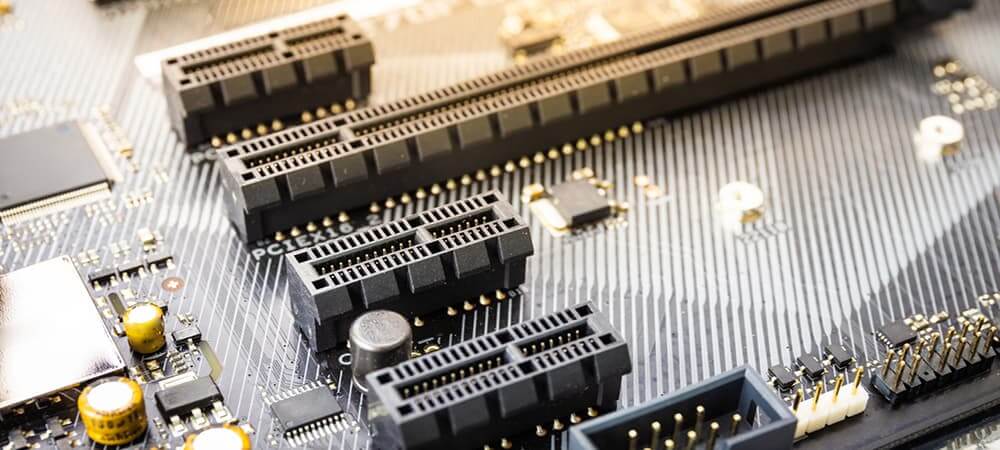The motherboard is often a single solid piece of hardware made of several parts that work together to make your PC function. One of the major parts of a motherboard are the expansion slots. They provide the installation point for any additional hardware connection the user might have in the future.
You might have some questions about expansion slots, especially if you’re looking to buy a motherboard for a custom PC setup. For example, how many expansion slots do you need? How can you use them most efficiently? How do they work exactly? Below, we’ll cover some of the fundamental details about motherboard expansion slots and how you can use them effectively.
Motherboard Expansion Slots: Types and Uses
Expansion slots are installation points for extra hardware cards and components. By that logic, expansion slots have different types of hardware to cater to depending on the hardware cards and drivers you might want to use.
Expansion slots enable you to improve the performance of your computer without making a large-scale modification to it. As a result, they are a cost-effective way to run a computer without having to upgrade certain parts of your existing setup. For instance, you can improve the gaming performance of a PC by adding a video card to its expansion slot. You can also introduce a stronger network card to enhance the computer’s internet connectivity speeds. Below are some expansion slot types:
- The AGP Slot: This expansion slot is for video cards.
- The AMR Slot: This slot primarily handles sound cards. It sometimes also works for modems, but not often.
- The CNR Slot: The CNR works for sound cards and modems, but you can use it for network card expansions as well.
- The ISA Slot: It handles sound cards, video cards, and network cards.
- The PCI Slot: The PCI slot supports video, sound, and network cards.
- The PCI Express (PCIe) Slot: Similar to the PCI slot in that it supports video, sound, and network cards, but PCIe slots also support modems.
- The VESA Slot: VESA slots supports only video cards.
As you might notice from the list above, some of the slots have overlapping functions. The similarity caused redundancy in computers that have all of them. Therefore, modern PCs only retained the AGP and PCIe ports for more efficiency, and more often than not, top-tier motherboards only feature all-encompassing PCIe ports these days as they offer expansion opportunities across a wide variety of use cases.
Number of Expansion Slots
Generally, the number of expansion slots you get on a motherboard varies. Manufacturers include expansion slots to cater to specific use cases, and depending on what type of use case they expect the motherboard to be used for. Typical motherboards generally have 2-4 expansion slots, however, it is quite common to see motherboards with 1 expansion slot, or even as many as 6 sometimes. It’s important to keep in mind that you can increase your expansion slot count if you need more afterward. This is especially useful if you’ve got an older motherboard and don’t want to spend more to get a new one but want more connectivity options.
One way to increase expansion slot numbers on your motherboard is by adding a riser board. A riser board is a component that only has expansion slots, and works similar to an electrical extension cord. You can get a riser board with PCI express slots for your aging motherboard.
Bear in mind that you wouldn’t need a riser board if you bought a newer motherboard, as the number of expansion slots is often enough for most use cases nowadays.
Final Thoughts
Expansion slots on motherboards are essential to any prebuilt or custom PC system you might have. They allow you to do more with your computer without needing to upgrade any of your parts. Nowadays, you don’t have to worry much about expansion slots, as manufacturers often include enough, but, PC enthusiasts may need more in certain situations.
Also, it does help to know the type of expansion slot you have on your system, as each slot type comes with different connectivity options. Typically, PCI Express slots are the most common ones these days, but you may need to do some digging through our motherboard buying guides to see which slots certain motherboards have. The manufacturer’s guide is another great place to find other expansion slots included with the motherboard.

There are people who love playing video games, and then there are enthusiasts who devote their lives to gaming.
Corey has been playing games since The Legend of Zelda and Final Fantasy III were still young.
Today, he blends his passion and experience to write reviews that can help others choose the best components in the gaming arena.
